Technology Observatory from 7th to 13th of July
This week's Technology Observatory brings you the following stories:
● Smartphones and tablets to be fully charged when traveling to the U.S.A.
● New European broadcasting standard incompatible with UHD TV sets
● Samsung slowdown continues in second quarter of 2014
● BlackBerry offers explanations to justify Passport design
● Google Maps finally measures and calculates distances
● It's official: Google Ventures is coming to Europe
● Your next TV set might be rollable and transparent
If you're traveling to the U.S.A. any time soon, be sure to have your electronic devices fully charged. Otherwise, you might find yourself having to choose between missing your flight or leaving your smartphone at the security desk. Alerted about a possible terrorist attack, the U.S. authorities have sent key selected airports with direct connections to the country stricter instructions about checking electronic devices, now to be intensified following the suspicion that they could be used by terrorists to create an explosion on board. Baggage controls will now include more thorough inspections of cellphones and tablets, and the authorities may also ask you to power up your gadget to check that it really is what it's supposed to be. If the gadget won't power up, it won't be allowed on board. Most people usually charge their gadgets before a long journey anyway, but now it's more important than ever if you want to avoid unpleasant surprises. NB: The regulation is not only limited to the U.S.A. The Transport Department of the United Kingdom has just announced that it will be implementing stricter controls on both inbound and outbound flights.
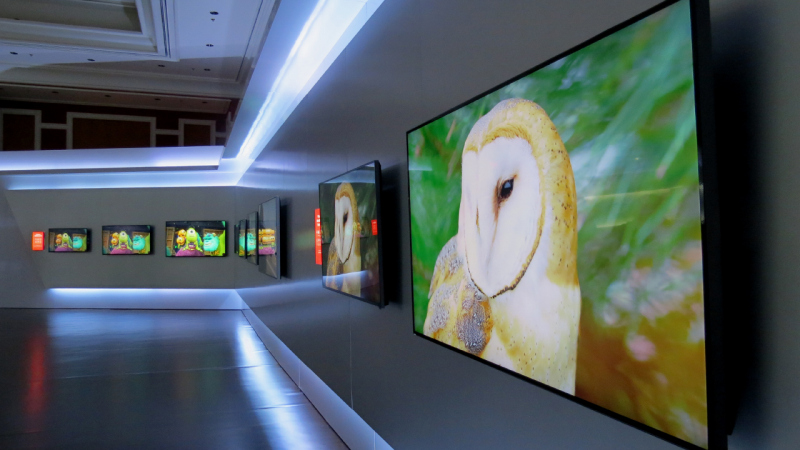
The DVB Steering Board has released a new broadcasting standard for ultra-high definition content (UHD, to friends) called DVB-UHDTV Phase 1, which is simply a specification to be followed for broadcasts in UHD or 4K format in Europe. The bad news about the new standard is that no UHD TV set in any home or on any store shelf is currently compatible with the standard. In short, 4K TV sets wouldn't be able to reproduce 4K content. Their screens might be capable but they simply aren't ready for the new standard. Why? DVB-UHDTV Phase 1 works in the same way as Netflix's 4K transmission system, based on HEVC compression, which means that TV sets will have to be able to decompress this codec to play 4K streaming content, and the models currently on the market just can't perform this task. However, there is a solution: you can either simply buy an external device to take care of this task, or replace your UDH set when the new models reach stores at the end of this year or the beginning of 2015 (most of them were unveiled at CES 2014) as they will support the new European standard. In any case, the measure is not yet definite. The European Union still has to approve the standard proposed by the DVB Steering Board, though it's unlikely there'll be any hitches as it's the simplest technology for broadcasting ultra-high definition content. Unfortunately, these problems arise when we get ahead ourselves and rush out to buy new technologies when they're still very new on the market. That's precisely why Gizmología recommended not buying a 4K TV (just yet), and now there's more reason than ever to wait a while.
With the first two quarters of 2014 already gone, it's time to take a look at how the first half of the year has treated the main market players, which are just beginning to share their second-quarter financial results. Samsung has been one of the first to publish its results, eagerly anticipated by analysts after the company reported a loss of market share for the first time in four years. And once again it's bad news for Samsung, confirming that there's no such thing as infinite growth. This time, however, it was the South Koreans themselves who explained the slowdown they've been struggling with for the last few months. In terms of the cold figures and before any explanations, let's be clear: Samsung has not lost any money and remains in excellent health, as demonstrated by the fact that the firm has reported an operating profit of 7.1 billion dollars. That said, the figure is lower than the first-quarter earnings and also below the 9.4 billion dollars reported in the same quarter last year. In this world, there is rarely one major cause for anything, and that's the case here as well. As it begins to unravel the reasons for its decline in growth, Samsung has pointed in the first instance to the strength of the Korean won, which is compromising exports. They have also reported falling demand in Europe and China, as well as the slow growth in the tablet market which they warned of a couple of months ago. The complicated Chinese market has never been easy territory for Samsung terminals, with the brutal competition making it extremely difficult to match brands like Xiaomi, Huawei and Lenovo with competitive products and very restrained prices. Meanwhile, the tablet market is stagnant due to the fact that its upgrade cycle is much longer than for smartphones and far closer to that of the conventional PCs they have all but replaced as the preferred browsing device in the home. According to Samsung, consumers upgrade tablets every two to three years. Moreover, there is no doubt that the smaller tablets have been pushed aside by the phablet range, invented by Samsung no less, and it is equally true that the larger-format smartphones have claimed vast sales figures so far, with the long-awaited Galaxy Note 4 on the horizon as well. It may be time for Samsung to start concentrating its efforts rather than saturating its portfolios, but in any case we can be sure that the second half of the year will be better for the South Korean firm. The Galaxy S5 must have played a part in increasing the figures thus far, although the results haven't been as satisfactory as they might have been, partly because the terminal hasn't broken any new ground and partly because a lot of people are holding out for Samsung's new top-of-the-range products. Did we hear Samsung Galaxy F? Did we hear Samsung Galaxy Note 4? If so, it wouldn't be far off the mark to expect these two devices alone to improve Samsung's third and fourth-quarter 2014 results. The Galaxy F will undoubtedly feature this year's most cutting-edge hardware, and the Galaxy Note 4's predecessor was the best terminal in the South Korean firm's 2013 portfolio, suggesting great things for this year's version. Even so, Samsung has already confirmed that it will not be spending any more on marketing than originally planned, and it has told its employees that they need to review how they work and manage their processes more efficiently. It looks like Samsung is beginning to feel the pressure of competition in a market the company has traditionally dominated with an iron grip. But let's not deceive ourselves: the figures still point to a company in robust health and in no need of any bailouts from anyone. They just need to charm their users again.
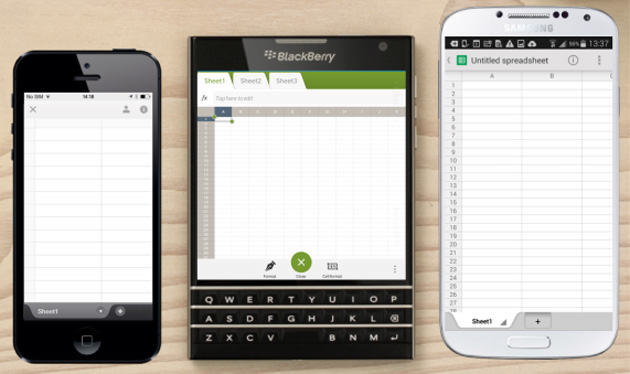
The most frequent reactions at first sight of the new BlackBerry Passport phone include surprise and confusion, accompanied by a few choice words we're not going to repeat here. The manufacturer must be aware of this as it's published an article explaining the reasons for the strange design of its new cellphone. After all, something so different doesn't get made without a calculated plan beforehand. BlackBerry begins its statement by saying that we're all "stuck in a rectangular world", which while ergonomic and great for watching videos is ultimately a design that limits innovation. Besides, for text content it's better to have a device showing the 66 characters (or thereabouts) per line that you see in a traditional book, and the Passport shows 60 compared with nearly 40 digits in other cellphones. This makes the screen of the new phone ideal for reading documents, and the physical keyboard that has so many fans remains available at all times without robbing any space, despite the limited size of modern mobile devices. Clearly, BlackBerry's justifications are aimed at captivating an audience of corporate workers who are always up to their eyes in spreadsheets and boring documents. However, in their free time those people watch videos, browse the Internet or even play the odd game, so we're not totally convinced by BlackBerry's reasoning. They've clearly gone out on a limb with something totally different, but in our opinion they haven't really pulled it off. What do you think?
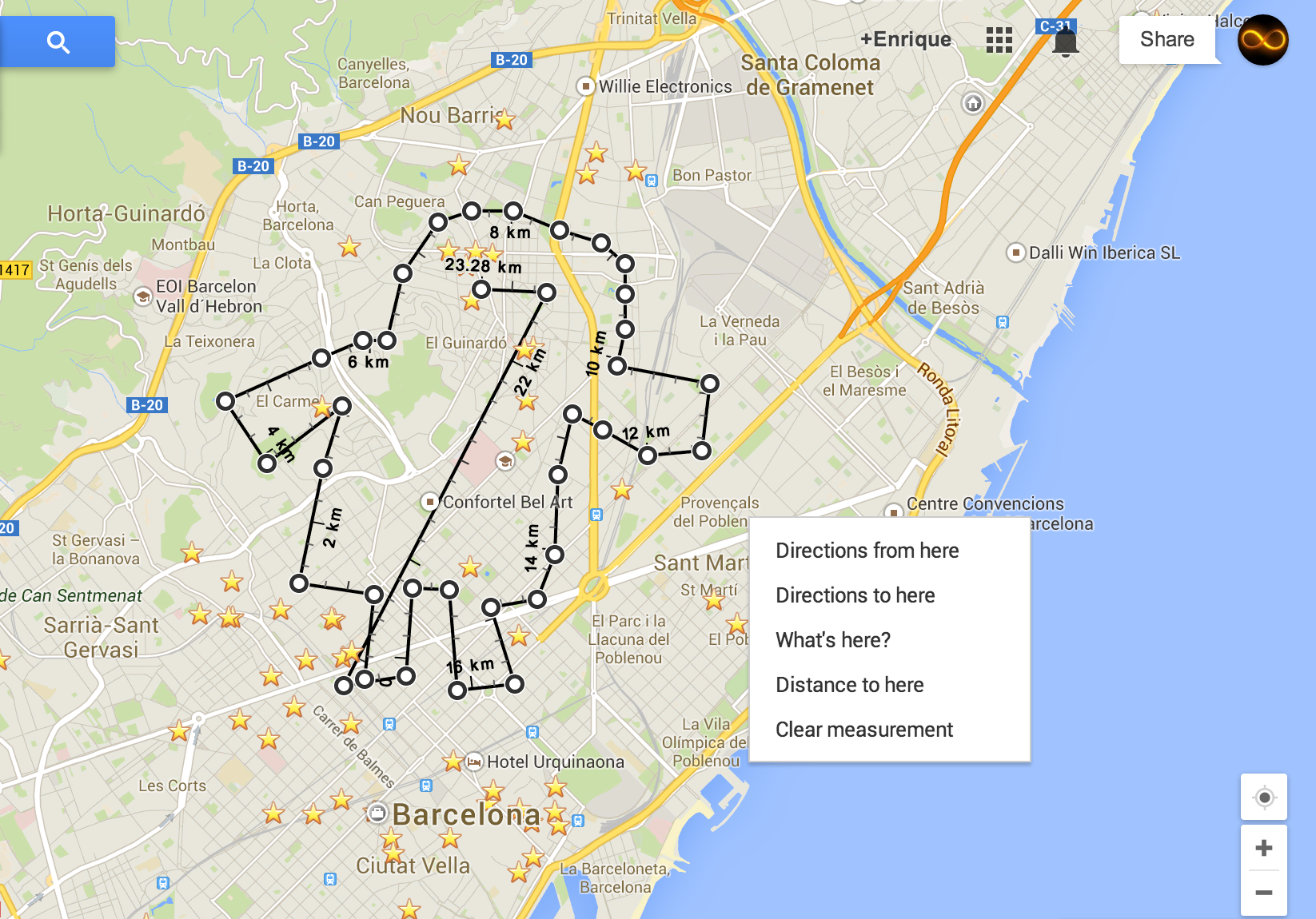
Google recently updated its desktop version of Google Maps with a very useful new feature. Now you can measure the distance between two or more points on the map simply by right clicking and selecting “Measure distance”. It's an easy way of knowing how many miles there are between one point and another, and you can choose as many points as you want, even going crazy with figures like the one shown in the image. The total distance will be calculated segment by segment. You can also drag the points and the distance will automatically be recalculated. The function is not available in the Android app, only on the web, though it would certainly be great to have this measurement facility in the app as well. Whether you're a cyclist, runner, walker or driver, this new function is sure to save you a lot of time when you're planning a journey or stroll and want to view certain distances in a more graphical way.
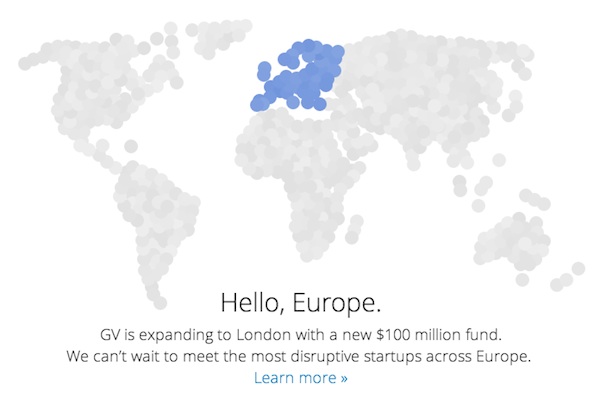
Google has dropped a last-minute bombshell. As just announced, Google Ventures is expanding to Europe with a view to giving a helping hand to potential entrepreneurs on this side of the pond. After five years in which the venture capital arm of the firm has financed countless different projects across the United States, it seems that Google has decided to widen its horizons and start doing the same in Europe, as was rumored last week. Accordingly, Google Ventures is expanding to Europe with a $100 million fund that it will use, in Google's own words, to "invest in the best ideas from the best European entrepreneurs". The guys at Mountain View are profoundly interested in Europe, where they see enormous potential. In recent years they say they have witnessed compelling ideas from initiatives like Spotify and SoundCloud and are certain that many more are sure to emerge from now on. This is clearly excellent news for all entrepreneurs as it will help those small but high-impact projects to get noticed and find a way forward.
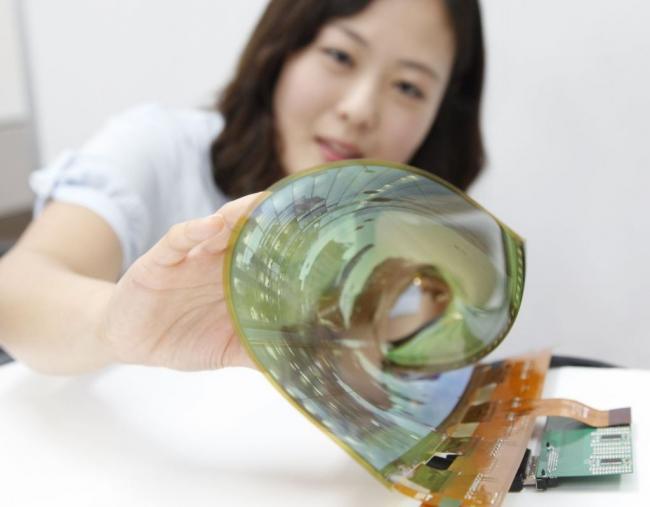
Following its LG Flex experiment in the flexibly display segment, the South Korean manufacturer is keen to reinforce this arm of its business and has just unveiled a new flexible 18-inch OLED panel. The screen can be rolled up and occupies a diameter of barely 3 cm because the new materials used to replace the plastic have made it both more flexible and significantly thinner. For now the resolution is not that high, at 1,200 x 810 pixels, but by 2017 LG hopes to be making 50-inch displays with UltraHD resolutions. The future envisioned by LG also encompasses a TV model with a panel of more than 60 inches and a curvature radius of 100R. Most astonishing of all, it will be transparent. They are already working on a smaller prototype for those future 60 inches, improving the current performance of LCD technology and achieving a transmittance of 30%, which is three times more than what we get at the moment.
